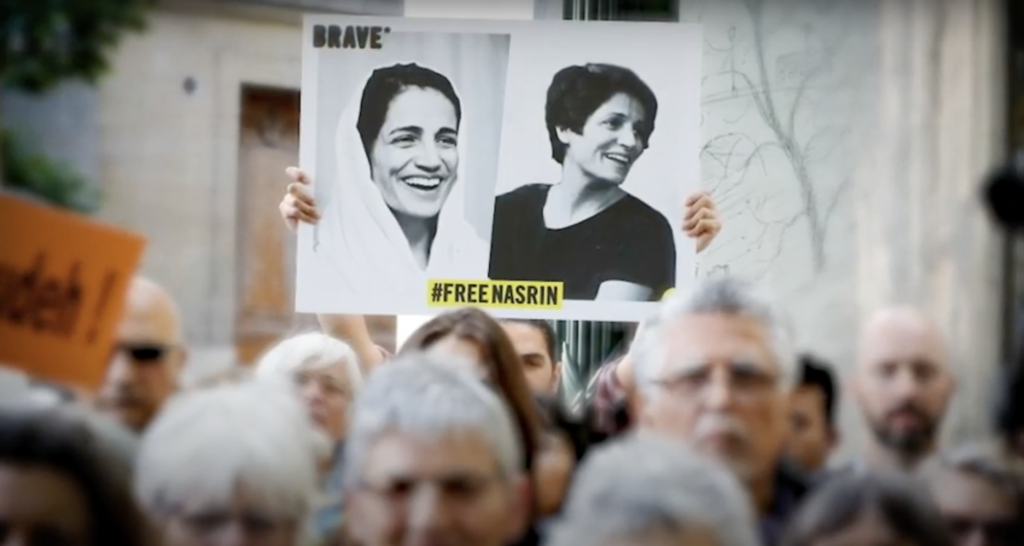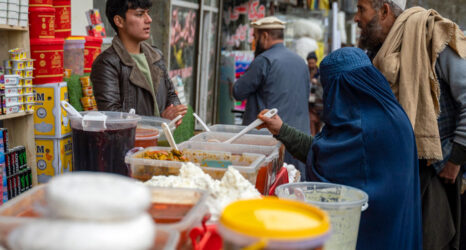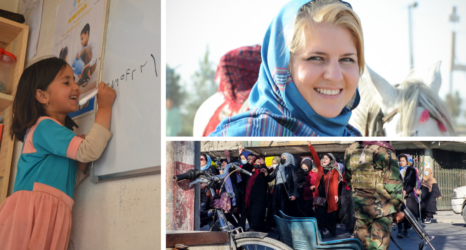Nasrin’s family, her advocates, and Nasrin herself won’t be silenced.

On Wednesday, as celebrations erupted around the world in response to the inauguration of President Joe Biden and Vice President Kamala Harris, Nasrin Sotoudeh, the Iranian human rights attorney, was quietly moved back to Qarchak women’s prison—known as one of the worst and most harrowing carceral institutions in the world—after a brief respite in the hospital where she was seeking medical care.
While Jan. 20, 2021 was a largely joyful day for most, for Nasrin and her family, it was another day of sadness: This would mark the third time in six months that Nasrin was shuffled back and forth between one circle of hell and another.
Perched on the eastern outskirts of Tehran, Qarchak prison is located in Qarchak, which is in the Varamin neighborhood of Tehran. The Human Rights Activist News Agency (HRNA) has published reports confirming Qarchak’s reputation as a place of overcrowding, under-feeding, torture and rape.
The seven-compound prison currently holds over 2,000 female prisoners, including political prisoners and those accused of violent crimes—twice the capacity of the space. There are only 600 beds, and many of the women are incarcerated with the children, the vast majority of whom sleep on the cold dirt-caked stone floors.
Worse still, reports of an outbreak of coronavirus in the prison have been released, confirming 20 cases, and speculating that given the close quarters in which the women are held, that this is a tiny drop in the number of actual COVID-19 cases. Qarchak prison is listed under Section 106 of the U.S.’s Countering America’s Adversaries Through Sanctions Act (CAATSA) on the basis of extrajudicial killings, torture and other violations of human rights.
“Qarchak is worse than you can imagine,” said one former political prisoner with whom I spoke after learning the news that Nasrin had been abruptly sent back. “I thought Evin [prison] was bad, I thought solitary confinement in Evin was bad. Little did I know that was a heaven compared to what I would face in there,” she elaborated—referencing Iran’s most well-known prison, Evin.
She and others I have interviewed over the years commented that most non-Iranians only know about Evin, and surmise that it is the worst fate a political dissenter could face. “Qarchak [prison] is a hell on earth. A true hell. I think so few people even know about it because no-one who has spent time there wants to ever repeat the name. It’s like we want to erase it from our memory. I can’t even imagine what torture it is for Nasrin to be released from there and then have to return,” she added. And, unfortunately, this is Nasrin’s third return.
Sotoudeh has been bounced between the Bermuda triangle of Evin prison, Taleghani hospital, and Qarchak prison for the past year. This is only in part due to her rapidly declining health.
After her hunger strike in the fall, Nasrin developed a terrible heart condition. When her health was deteriorating, prison guards in Evin told her that she would be moved to a hospital for care. Grateful for this turn of events, Nasrin readied herself for this move. But, when the authorities came for her, she was put in a car and driven not to the hospital, but to Qarchak prison. This almost broke her mentally.
“This is what they do, the Iranian authorities, they try to break political dissidents emotionally,” said Jeff Kaufman, who has made a film about Nasrin and is a long-time advocate for human rights in Iran. Kaufman had interviewed another former political prisoner who had been held in Evin for a film several years prior.
“I remember something she said that stuck with me,” Kaufman recalled. “She told me that while she was in Evin, one day the guards came to her and told her she was going home. She was ecstatic and cried with joy. But … then what happened was that they loaded her into the car, drove her around the large Evin compound and gardens, and then put her back in her solitary confinement cell. She said that this is what broke her. The thought that she was finally going home, only to be tricked and returned to her cell.”
The decision to take Nasrin to Qarchak rather than the hospital was a deliberate move to break her mental health, and also her physical health, speculates Kaufman. By then, reports of the COVID outbreak in the women’s prison had spread, and it is likely that the authorities wanted to expose the already ailing Sotoudeh to the wicked virus. With the overcrowding conditions in Qarchak, it was not long before Nasrin did indeed contract coronavirus. It was only then that she was taken to Taleghani hospital where she was treated—not for the heart condition that she had been promised to be treated for—but for COVID-19.
Nasrin’s husband, Reza Khandan, had this to say about Qarchak: “Despite the coronavirus, these prisoners can’t keep enough distance. That’s why Nasrin was infected with coronavirus in less than three weeks after being transferred to Qarchak. The horrible smell of this prison that looks like the stench of the dead bodies in addition to the prisoners, soldiers and personnel. One of the veterans said I was poisoned by the bad smell of prison on my first days of service here and had to send them on therapy leave for a while.”
Earlier this month, Sotoudeh had been told by the authorities that she could have an extended leave from the hospital to spend time with her family. Two weeks, she was told, and she excitedly returned home to visit with her family, and to finally return to her office very briefly. Her excitement was short lived. The day after being told of her reprieve, the authorities came to return her not to the hospital, but to Qarchak prison.
Nasrin is not alone in that many political prisoners in particular are given this maddening treatment. They are moved from one house of horrors to the next, their emotions toyed with. Often, their families are used to inflict pain as an added layer of torture. Families and would-be advocates are told to keep quiet if they don’t want their loved one to suffer further. And part of the shuffling around is also meant to confuse advocates, and to silence them.
But Nasrin’s family, her advocates, and Nasrin herself won’t be silenced. Her husband, Reza, remains a loud voice, posting on social media about his wife’s mistreatment and bringing attention to her cause. Despite her weakened body due to all of the health challenges she has faced, Nasrin remains strong mentally—which is the ultimate threat to the regime.
Today, Nasrin is locked inside a small, windowless room with forty women and only twelve beds. They have to take turns eating and sitting as there is not enough room for all of the women to do so at once.
“They think this will silence her,” Kaufman said when discussing the conditions in which Nasin is being held. “They think this kind of living will be enough to make her stop. But that’s not Nasrin. She is spending her time making friends with the women with whom she shares a cell. She wants to advocate for them. Nasrin will not be silenced.”
As I spoke to friends and relatives in Iran to learn more about Nasrin’s whereabouts and her mental and physical health status, my 10-year-old Iranian-American daughter curled up next to me. She has been following Nasrin’s story for over a year now and is inspired by her strength. My daughter put her hand on my lap and pointed up at the three paintings on our wall—paintings of our favorite Iranian figure, Khorshid Khanoum or Lady Sun.
“Whenever I think about Nasrin, I picture Lady Sun,” my daughter said. “When darkness surrounds her, she still shines bright. Like Dr. Martin Luther King, she drives out darkness not with darkness but with light.”
Editor’s note: Tony winners Lynn Ahrens and Stephen Flaherty wrote a beautiful song for Nasrin that was performed by four-time Grammy winner Angélique Kido. We encourage you to watch the music video and share it with others.
You may also like:





